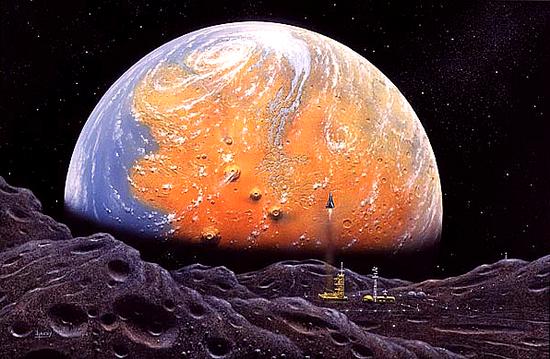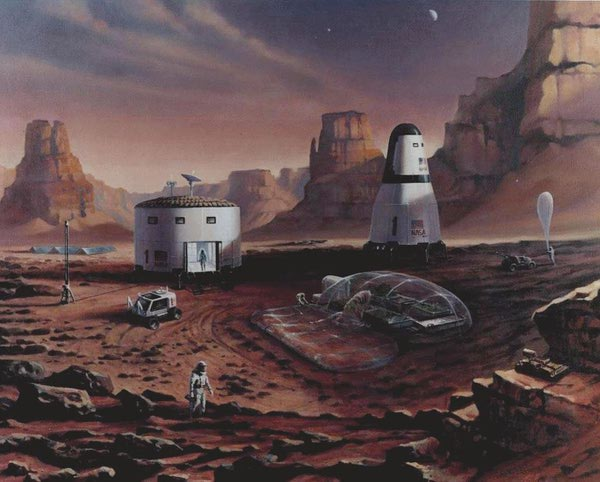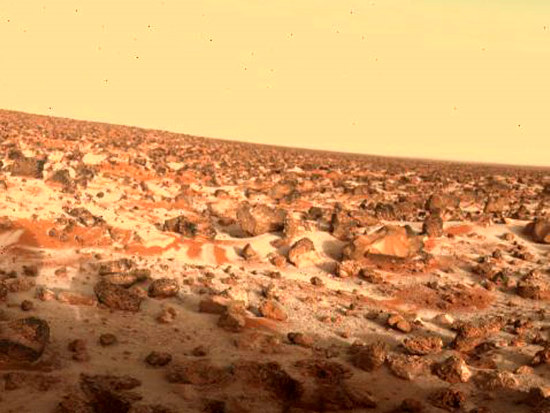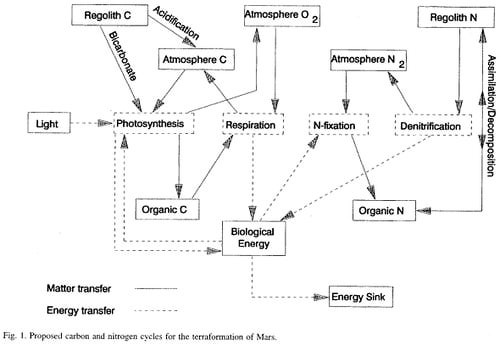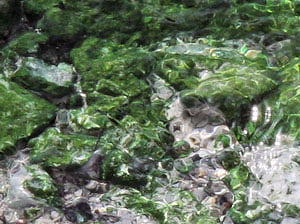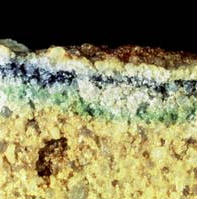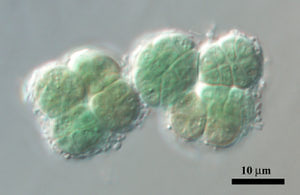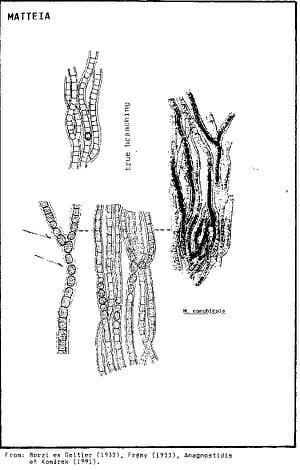Terraforming: Difference between revisions
| Line 23: | Line 23: | ||
Mars is the preferred planet of interest for terraforming because it's history of once being a water planet, and the fact that it still retains much of its CO2, nitrogen, and H2O. (Graham) Currently Mars is very cold and it's atmosphere is relatively thin and mostly consists of CO2 (95.3%) with very little O2 and N2. Mars only recieves 43% of the light Earth gets from the Sun, yet it is still sufficient enough for photosynthesis.. (Thomas) | Mars is the preferred planet of interest for terraforming because it's history of once being a water planet, and the fact that it still retains much of its CO2, nitrogen, and H2O. (Graham) Currently Mars is very cold and it's atmosphere is relatively thin and mostly consists of CO2 (95.3%) with very little O2 and N2. Mars only recieves 43% of the light Earth gets from the Sun, yet it is still sufficient enough for photosynthesis.. (Thomas) | ||
<br><br> | <br><br> | ||
Proposed Terraformation of Mars would require: | Proposed Terraformation of Mars would require:<br> | ||
<ul> | <ul> | ||
<li>Warm planet to 290K</li> | <li>Warm planet to 290K</li> | ||
Revision as of 01:56, 6 April 2012
Planetary Engineering
Terraforming or “Planetary Ecosynthesis” is the process of changing a planet’s atmosphere to resemble that of the Earth’s, with the goal of sustaining terrestrial life. It is predicted that establishment of life will be similar to Earth’s history, starting with basic unicellular microorganisms. The most pheasible pioneer to begin life on a new planet would be some kind of photosynthetic microbe. (Graham)
The strategy of using photosynthesis to engineer a habitable planet for humans through photosynthesis would not be unlike the Great Ogygenation Event that took place on Earth 2.4 billion years ago, some time after cyanobacteria first evolved (2.7-2.8 billion years ago.) This pivotal event paved the way for evolution of multi-cellular organisms and later, human beings.(Farquar)
The topic has sprung much speculation as well as the ethics surrounding the idea.
Candidates for Terraformation
Mars: the winner
Mars is the preferred planet of interest for terraforming because it's history of once being a water planet, and the fact that it still retains much of its CO2, nitrogen, and H2O. (Graham) Currently Mars is very cold and it's atmosphere is relatively thin and mostly consists of CO2 (95.3%) with very little O2 and N2. Mars only recieves 43% of the light Earth gets from the Sun, yet it is still sufficient enough for photosynthesis.. (Thomas)
Proposed Terraformation of Mars would require:
- Warm planet to 290K
- Increase atmospheric pressure while adding O2
- Melt water (which Mars has frozen in Ice caps)
Venus
Venus has been proposed but it’s problems far surpass Mars in that it has a very thick atmosphere, little water, and it’s temperatures are much warmer than Earth. (Graham) Venus also has clouds made of searing sulfuric acid, and one Venus day is equivalent to 127 Earth days. (Birch)
Proposed Terraformation of Venus would require:
- Cooling the planet to 290K
- Removing CO2 and other poisonous gases from the atmosphere while replacing it with oxygen
- Reduce day length to 24 hours
- Provide water
Biological interaction
Provide details of the symbiosis or biological interaction. Is this a specific or general interaction? How do these interactions influence the host or other microbial populations, and their activities? How do these interactions influence other organisms (positive or negative influences)? What is the outcome of this interaction? Are there ecological consequences? Describe biological interactions using as many sections/subsections as you require. Look at other topics available in MicrobeWiki. Create links where relevant.
Niche: A New World
To lay the foundation for microbial terraforming, the agreed plan for Mars begins with:
the release of man-made greenhouse gases into the atmosphere, heating the planet substantially, which will then cause CO2 evaporation from the planet’s own glaciers and soil, producing further warming.
Melting glaciers will produce hydrologic cycles and evaporated H2O into the air, creating a denser atmosphere. This suggests a global temperature of at least 0 degrees Celsius.
Water will be stable on the surface and temperatures will be more moderate, but the atmosphere will be mostly CO2 and have little O2.
So long as UV radiation remains high, microorganisms will be confined to living in or under rocks. (Martyn Fogg 1995) UV radiation screens have been proposed for microbial access to surfaces. (Graham)
Microbial populations set to colonize Mars can expect extreme cold temperatures, high radiation, little to no moisture, and limited nutrients.(Graham)
Microbial processes
Mars has no tectonic activity so no biogeochemical cycling occurs there. It's thought that biological and photochemical processes can run the cycles on Mars.
Carbon cycling
Photosynthetic microorganisms removie CO2 from the atmosphere by photosynthesis:
6CO2 + 12H2O + Light -> C6H12O6 + 6O2+ 6H2O
Eventually heterotrophic microbes will release CO2 back into the atmosphere through respiration:
C6H12O6 + 6O2 --> 6CO2 + 6H2O + energy
Certain Microrganisms such as Matteia have been proposed to release CO2 from carbonate rock to complete the cycle in the early stages of colonization, just until enough enough carbohydrate is available to support heterotrophs.
Oxygen
Cyanobacteria and algae will be used to increase O2 through photosynthesis
6CO2 + 12H2O + Light -> C6H12O6 + 6O2+ 6H2O
Nitrogen cycling
Besides CO2 and O2, a buffer gas is needed to support human life, and nitrogen is necessary for photosynthesis at the start of terraformation.
Currently there is not enough N2 in Mars' atmosphere for nitrogen fixation and therefore, denitrifican is necessary as long as the regolith contains nitrate as is proposed
Denitrification:
NO3− → NO2− → NO + N2O → N2 (g)
Cyanobacteria can reduce N2 to ammonia:
N2 + 8 H+ + 8 e− → 2 NH3 + H2
Sulfur cycling
Most microbes utilize oxidized sulfur for protein synthesis.
Phosphorous cycling
Phosphates are insoluble minerals that are highly conserved in stable environments but through time losses can be a possible issue for terraformation. This may be the case with other non-volatile, minerals such as iron, manganese, and magnesium. (Thomas)
Key Microorganisms
Microorganisms are the best option for colonization of a new planet because of their wide range of physiologic and metabolic funtions and are capable of horizontal gene transfer. Two strategies have been proposed for choosing the best pioneers. One can either choose a generalist extremophile on Earth that inhabits environments similar to the new planet, or genetically modifying a new species with all the best traits required for the job. (Creating a Genetically Engineered Mars Organism "GEMO") (Hiscox)
Proposed traits of the perfect pioneer are:
- Must be photoautotrophs
- Must be anaerobic and respire without O2
- Osmotic tolerance
- Resistance to UV radiation
- Cold tolerance
- Tolerance for Nutrient limitations
- Tolerance to limited water
- Resistance to oxides
- Adaptation to lowered intracellular pH due to CO2 in atmosphere
- Can form Endospores
Proposed Photoautotrophs
Cyanidium caldarium
A unicellular red algae found in diverse extreme environments such as bogs, wet acidic soils, and hot streams. It has been found to survive with little to no oxygen. (Sechbach et al.)
Cryptoendolith Lichens
Literally "hiding in rocks" An extremophile found in porous rock in Antarctica where temperatures are normally -89.2°C to -93.4°C. There has been no rain or snowfall in the Antarctic Desert for over 100 years.
Chroococcidiopsis
Proposed Denitrifers
Matteia
We suggest that Matteia sp., a lime-boring cyanobacterium isolated from Negev desert rocks, be used to dissolve carbonate rocks both for initial release of CO2 and in design of a Martian carbon cycle. (Friedmann)
Psuedomonads
Alcaligenes
Proposed GEMOs
Bacillus Polymyxa
Current Research
Enter summaries of recent research here--at least three required
References
Edited by <your name>, a student of Angela Kent at the University of Illinois at Urbana-Champaign.
